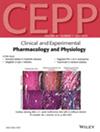Mitochondrial Oxidative Stress and Cardiac Dysfunction in TERT Deficient Progeria Mice
Abstract
Background
Heart failure (HF) is a major cause of hospitalisation in the elderly. Its incidence increases with aging and the presence of risk factors such as hypertension and diabetes. Aging-related myocardial fibrosis, characterised by alterations in the extracellular matrix and myocardial structure, leads to impairment of cardiac function. However, the specific mechanisms linking mitochondrial oxidative stress to cardiac remodelling in aging remain unclear.
Objective
To elucidate the mechanisms underlying aging-related ventricular electrical and structural remodelling and to determine the role of mitochondrial dysfunction in modulating aging-associated HF.
Methods and Results
We developed third-generation homozygous telomerase reverse transcriptase deficient (TERT−/−) progeria mice to model accelerated aging. Compared to wild-type controls, these mice exhibited marked upregulation of aging-associated genes and proteins such as p53 in ventricular tissue. Echocardiographic analysis revealed significant reductions in left ventricular ejection fraction and fractional shortening, indicating both systolic and diastolic dysfunction. Histological staining showed increased interstitial fibrosis and inflammatory cell infiltration, which correlated with elevated expression of fibrosis markers including collagen type I and TGF-β. Electrocardiography and epicardial mapping demonstrated prolonged QRS duration and slowed ventricular conduction velocity. These findings, together with increased conduction heterogeneity, are indicative of electrical remodelling. Furthermore, RNA sequencing and biochemical assays identified upregulation of mitochondrial oxidative stress pathways and elevated levels of malondialdehyde and MnSOD, alongside disrupted mitochondrial ultrastructure and downregulation of mitochondrial dynamics-related proteins such as MFN2 and Drp1. These findings highlight the central role of mitochondrial dysfunction in driving structural and electrical cardiac remodelling in aging.
Conclusion
The findings demonstrate that third-generation TERT−/− senescent mice exhibit significant cardiac impairments, including electrical remodelling, structural changes, and mitochondrial dysfunction, suggesting mitochondrial oxidative stress may be related to aging-related HF. These insights underscore the potential of targeting mitochondrial dysfunction for therapeutic strategies in aging-related HF. Collectively, these data demonstrate that telomerase deficiency drives cardiac structural and electrical remodelling through mitochondrial oxidative stress, underscoring mitochondrial quality control as a potential therapeutic target in aging-related HF.


 求助内容:
求助内容: 应助结果提醒方式:
应助结果提醒方式:


